His Fantastical Story

Vladimir Tretchikoff, born in 1913, was a self-taught artist whose distinctive style captured the hearts of millions. His work, characterized by its vivid colours and dramatic themes, offers a visual feast that continues to captivate audiences worldwide. Despite facing criticism, he remained committed to his vision, creating art for the people.
Here’s a brief timeline of Tretchikoff’s life journey: from his birth in Siberia, his time in Asia during World War II, to his later life in South Africa.
1913
Vladimir Griegorovich Tretchikoff was born on 13 December 1913 in Petropavlovsk, Russia (a superstitious man, 13 would remain his ‘lucky number’ for life).
1917-1922
After the Russian Revolution, the Tretchikoff family moved to the far east of Russia, but when that province was also integrated into the Soviet Republic, the family crossed the border into China with no immigration papers and very few belongings, and settled in Harbin where there was a large concentration of Russian émigrés.
1925
Tretchikoff started working at the age of 11. His first job was a jack of all trades at a theatre company while still going to school in the afternoons. His mother had died the previous year of typhus and his father disappeared soon after that.
1928
Now aged 14, Tretchikoff entered – and won! – a portrait competition for the railways. The prize was 500 golden roubles and Tretchikoff wanted to use that money to go to Paris to study art. That didn’t go according to plan, though.
1929
Instead, at the age of 16, Tretchikoff moved to Shanghai and started work as a scene painter for an opera company.
1935
By 1935 he had settled in Singapore where he worked in advertising and also produced illustrations for The Straits Times. Tretchikoff also collaborated with the British Ministry of Information, designing anti-Axis propaganda at the outset of World War II.

1940
Tretchikoff married Natalie Telpougoff, a fellow Russian émigré. Theirs was a love story that would last many decades. They became the toast of Singapore’s high society and he would often design her dresses.

1942
During the invasion of Singapore by Japan, Natalie and their daughter Mimi were evacuated on a ship, destination unknown. A few days later, Tretchikoff was also evacuated. However, the boat on which he and some 300 others were fleeing was sunk by Japanese military ships in the open sea. Tretchikoff and the few other survivors rowed for 21 days to Java, where they were interned by Japanese forces.
1943-1946
After a few months — and an encounter with the Japanese commander in charge of the prison — Tretchikoff was released, and he spent the rest of World War II in Batavia (now Jakarta), devoting himself to painting. He meets Lenka and paints her in Red Jacket, a painting his wife Natalie would prize above all others.
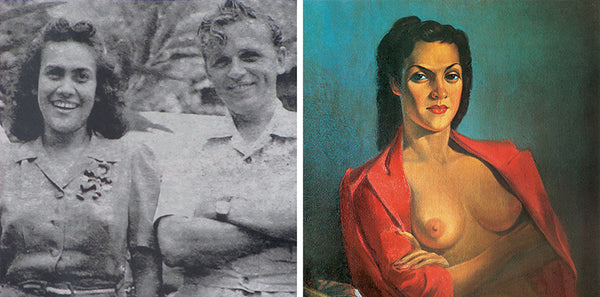
1946
After the war ended, the Red Cross reunited Tretchikoff with his wife and daughter in Cape Town, so he relocated to South Africa — after the war it took him almost a year to get there — where he would live for the rest of his life.

1950
His painting “Chinese Girl” was completed. This would later become his most famous work, renowned for its distinctive blue-green skin tone.

1951
Tretchikoff embarked on a tour of the United States, where his works were exhibited and sold, increasing his popularity.
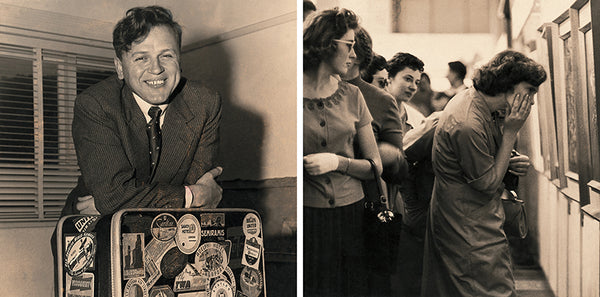
1952-1960
Tretchi’s department store exhibitions were a major event in the cities in which they were held, always attracting record crowds. He was always willing to sign prints and chat to visitors.
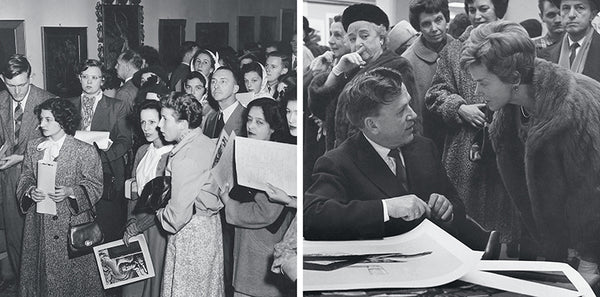
1961
His painting “The Dying Swan” with ballerina Alicia Markova was completed.

His exhibition at Harrods of London attracted more than 200 000 visitors.

1969
The publication by Howard Timmins of the large format coffee table book known as ‘The Gold Book’, was a major coup for Tretchikoff. It was probably the most luxurious publication produced in South Africa at the time.

1970
Tretchikoff was highly innovative in showing his work in commercial spaces not usually associated with art. He pioneered the marketing of mass produced prints of his work.
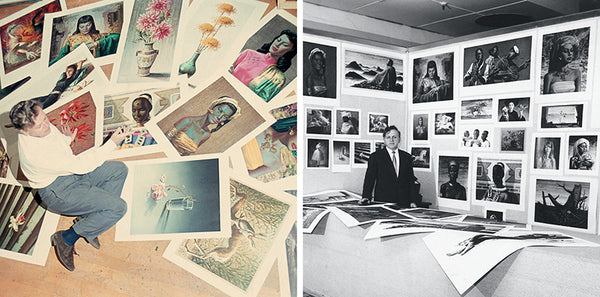
1973
Tretchikoff published his autobiography, Pigeon’s Luck, co-authored by Anthony Hocking, who painstakingly researched and contacted people in more than 21 countries. Tretchikoff’s dedication reads: “To Natalie, my wife, who says that life with me is one moment in heaven, next in hell but mostly in purgatory.” The inspiration for the title came from a pigeon which had flown into his home in 1947 and nestled on his wife’s lap and became a fixture in the home. They named it Schkoora. Tretchikoff believed this pigeon to be a good omen because in Russia if a bird flew into the home it brought great luck. (See Schkoora, the pigeon, perched on his painting)

1998
He suffered a stroke, which left him partially paralyzed but didn’t deter him from painting.
2002
Tretchikoff retired from painting due to health problems.
2006
Vladimir Tretchikoff passed away on 26 August, in Cape Town, South Africa, at the age of 92.
2011
Iziko South African National Gallery in Cape Town hosted a retrospective of his work, acknowledging his impact on South African visual culture. ‘In many ways, Tretchikoff is a major figure in the history of South African and world art and ignoring him won't make him go away. It's about time that we gave him a critical look and reassessed his rightful place in our art history,' noted Andrew Lamprecht, exhibition curator and fine arts lecturer.
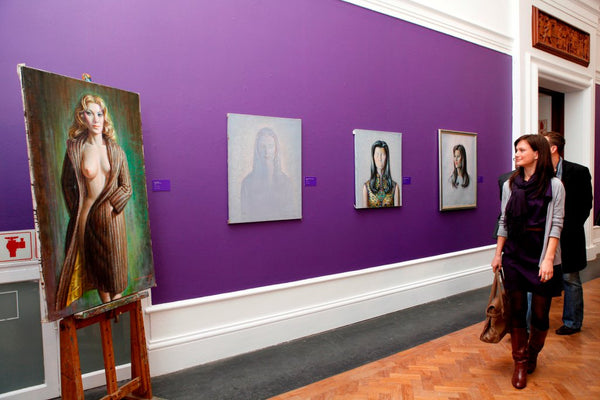
2013
Tretchikoff’s most prolific work — "Chinese Lady" is bought on auction at Bonhams in London for a record breaking 1 million pounds (almost double its estimate) and returns home to South Africa. The artwork can be visited at the Delaire Graff Wine Estate in Stellenbosch.

